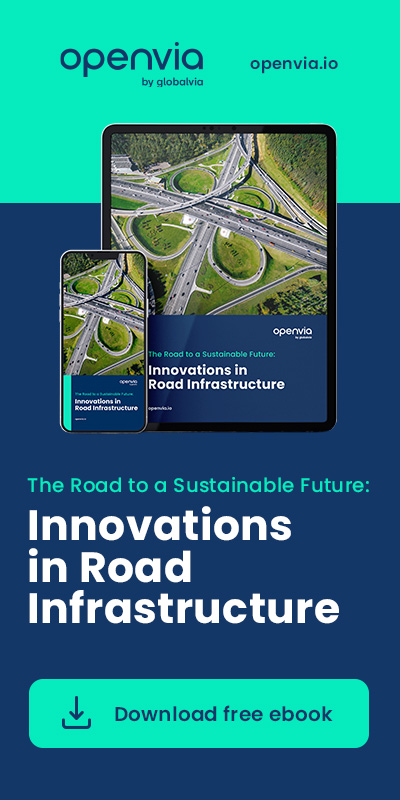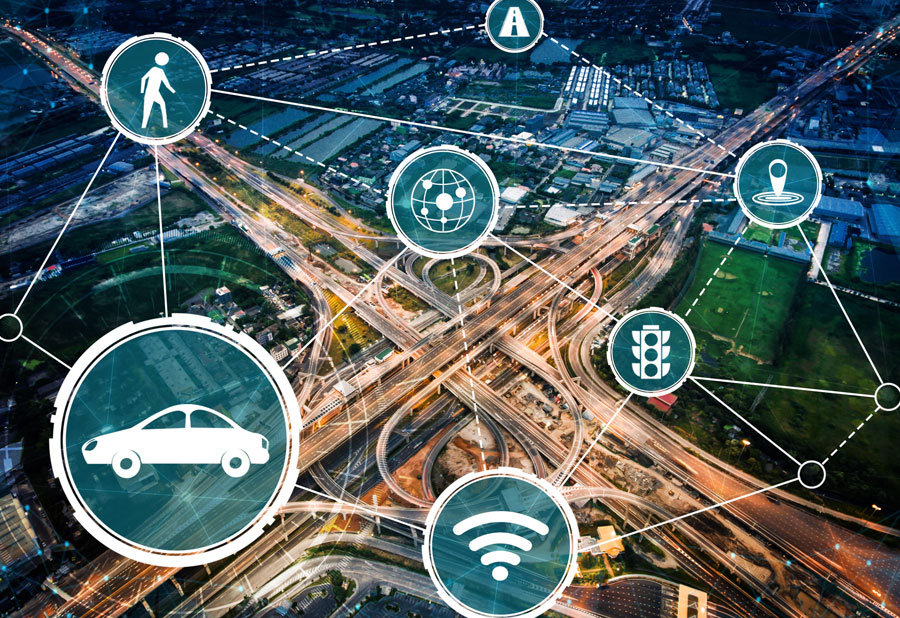Globalvia is one of the leading infrastructure managers in the transport sector, with concessions in eight countries and actively identifying new opportunities around the world. In each country, with its own characteristics and its own infrastructure development plans, projects are generated in both urban and interurban areas, directly involving private initiative or in public-private partnership processes.
Globalvia is aware of the important technological changes that affect and will affect the use of infrastructures in the short and medium term. Electric vehicles, autonomous vehicles,platooning, C-ITS,Free-Flow,car sharing, European interoperability of electronic tolls,Big Dataor the more than necessary combination of these are not just words that are heard in innovation forums, but are some examples of technological changes that are already beginning to be present little by little in our daily lives and others that are already in advanced stages of gestation and will soon be a reality in our lives.
In the urban sphere, cities are currently facing two major challenges: on the one hand, mobility management due to population growth and, on the other, environmental management.
Sustainable and user- and environment-friendly cities penalise the use of private vehicles within the metropolitan area, proliferating phenomena related to private and sustainable mobility such as bicycle rentals, electric vehicles and car sharing. Some agents involved in the sector question whether these new services will reduce the use of public transport, but these journeys are mostly associated with recurrent travellers, while the use of shared vehicles is associated with occasional journeys. As an example, metro users in Madrid, where Globalvia is present with three concessions, have increased in 2017 by 7.2% compared to 2016, with two car-sharing systems, totalling 1,000 units, being fully operational in the capital during this period, as well as two bike-sharing systems and one bicycle-sharing system. This is also the case in other European capitals where these systems have been implemented.
Within interurban mobility, in Spain, after a decade in which investment in infrastructure has suffered continuous reductions, the significant deficits existing in the transport networks must be corrected. In terms of motorways, the new 2018-2020 investment plan (PIC), under the concession system being developed by the government, aims to build new infrastructure but also, just as importantly, to implement improvements and maintenance of existing infrastructure that will change the way drivers think about their journeys. The experience accumulated in this type of projects allows Globalvia to present itself as a solvent company, capable of managing these projects throughout the concession period and not only during construction.
Want to know more about Roads of the Future?
In this context of network improvements, already at a global level, the emergence of vehicles with the ability to communicate with nearby vehicles (V2V, «platooning«), to «visualise» the infrastructure they are driving on their own (autonomous vehicles), to communicate with the infrastructure (V2I) to transfer information to other vehicles driving on the same infrastructure or to receive information from the infrastructure (I2V), will transform driving time into «useful» time that can be devoted to other tasks. It has been shown that the real benefit of these vehicles will be achieved when they are able to connect both to each other and to the infrastructure. By taking the human factor out of the driving equation, a high societal benefit will be achieved through reduced accident rates and congestion levels.
Activities such as stopping at a toll plaza to pay tolls are, in view of the imminent technological changes, an outdated scenario, and technologies such as Free-Flow or payments with mobile devices without the need to stop, which Globalvia already uses in different assets, are becoming more and more widespread.
The combination of all of the above and the use of cleaner engines and their recharging pose a scenario for the coming years in which progress clauses in contracts will be geared towards adapting roads for the circulation and connection of these new types of vehicles.
In the field of railways in Spain, the high-speed networks needed to complete territorial connectivity must be completed. Although the State is the promoter of these infrastructures through ADIF, passenger transport is expected to be liberalised in 2020, which represents an opportunity for companies such as Globalvia, which already has experience in metros and trams with 8 operating concessions in Spain and a Railway Company Licence for freight and passenger transport. Other countries such as the United Kingdom and the United States are investing in high-speed corridors, particularly the Los Angeles-San Francisco connection, where Globalvia participated in the definition of the line’s operating strategy.

Complementing advances in vehicles and infrastructure, other technological developments are being incorporated that may redefine the way in which mobility services are provided: Big Data, Internet of Things, Automation, Artificial Intelligence, robotics or even drones.
These developments have implications that affect motorways and railways differently:
- User needs: through Big Data, scenarios are analyzed in which the systems will be the ones to inform about alternative routes in real time, determining the route and the optimal means of transport, allowing to adapt its capacity according to demand by introducing dynamic prices and even in the autonomous car scenario, making the decision for us.
- Infrastructure design: it involves large investments and it is important to consider the needs of the different stakeholders in the projects. Predicting the evolution of these needs is already a reality through the application of Big Data techniques. Once the project has been decided, it is necessary to incorporate new elements in its design such as, for example, those that allow improving safety and integration with the environment such as more environmentally friendly materials, paint that shows temperature changes or visible at night without the need for lights, pavements that store energy and allow the charging of electric vehicles, etc.
- Infrastructure operation and maintenance: in this area, Big Data, IoT and artificial intelligence facilitate automation and decision-making on the operation of the different elements that make up the infrastructure.
Globalvia will continue to play an important role in infrastructure management with its 20-99 year contracts, incorporating current and future technological innovations into its processes. To this end, Globalvia is present in different national and international forums in the sector, collaborating in the implementation of new transport models that integrate the different types of innovation within an appropriate regulatory framework. It also has an innovation-oriented structure and internal policies based on sustainability and user satisfaction as the main pillars of its management and decision-making model.







